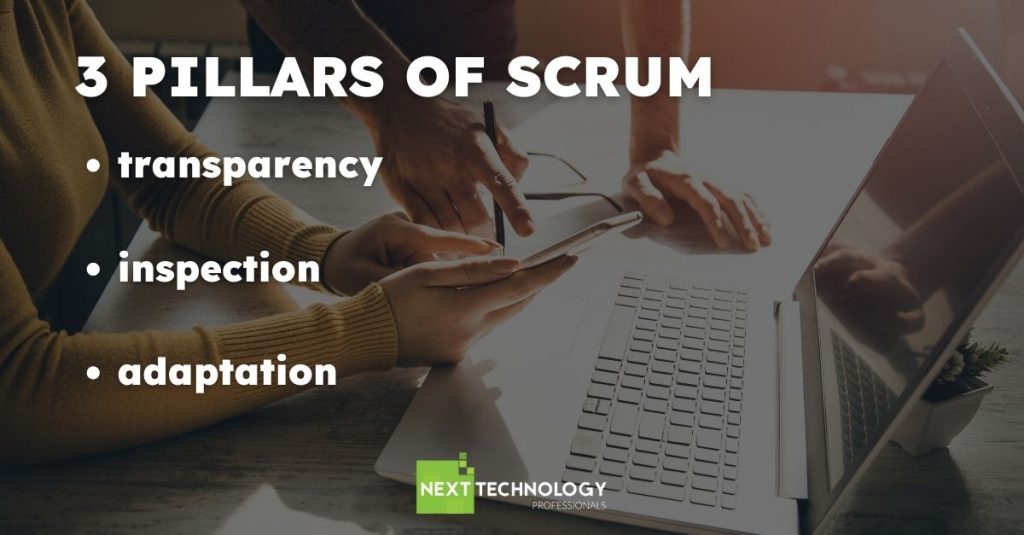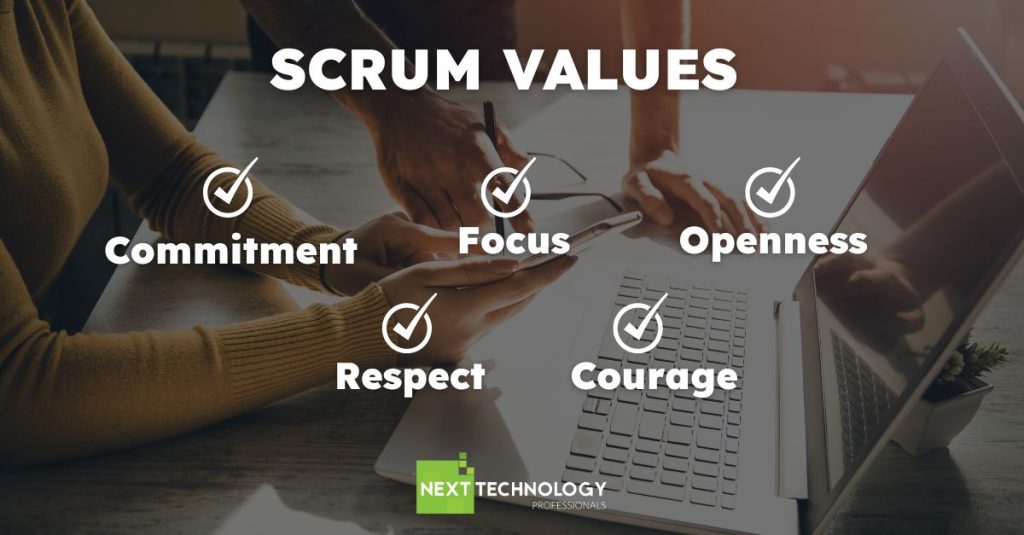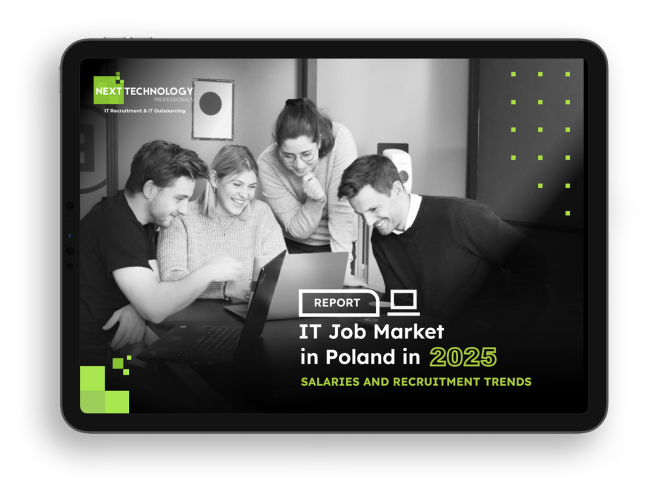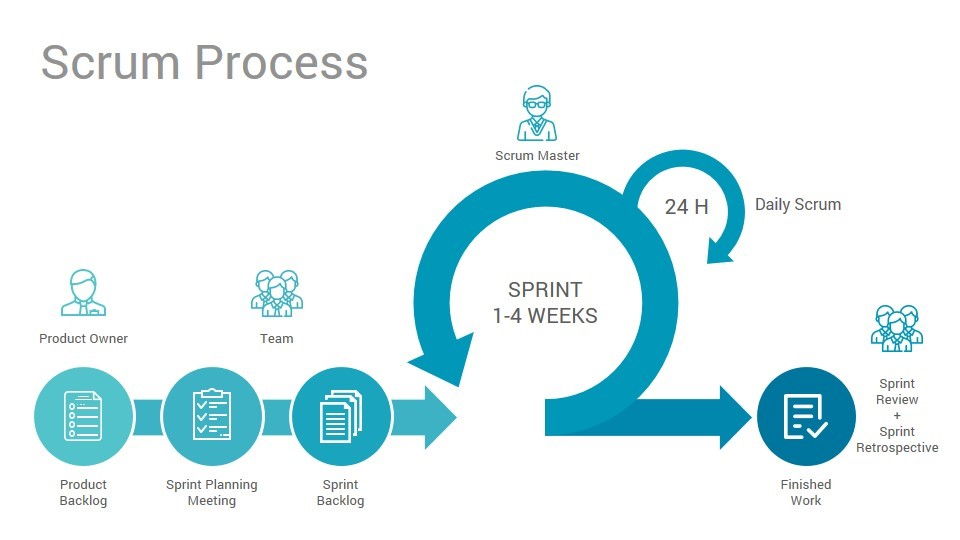As the Scrum Guide definition says, Scrum is a lightweight framework that helps people, teams and organizations generate value through adaptive solutions for complex problems. In other words, Scrum is a tool that allows you to solve difficult problems and create the most valuable products.
Scrum is an agile approach to creating new products and services. As a product, we often understand software, because the term comes from the IT industry, but we can confidently apply Scrum in any field. The product can be e.g. an EB campaign, marketing conference or podcast.
Scrum is strongly related to Agile, but these are not synonyms. While Agile itself is a mindset with many innovative concepts and ideas, Scrum is a way to implement Agile thinking to apply it in your daily work. You can read more about Agile in our separate article.
How does Scrum work?

Scrum works so well because it is based on delivering the product in small increments, so we always know where we stand and have a well-functioning version of the product available at all times.
The tool is based on a simple scheme that allows us to adjust our actions to the changing, unpredictable reality. Scrum is made up of three pillars of empiricism: transparency, inspection, and adaptation.
- Transparency is the foundation of activities, allowing decisions to be made on the basis of a true, unadulterated image of reality. In Scrum, everything is transparent and “brought to the surface”. Any delays, inconsistencies, dysfunctions or conflicts in the team are immediately visible and reported to the Product Owner.
- Inspection is about keeping a close eye on reality and analyzing what is happening in a company, team, or product. Thanks to it, Scrum allows you to immediately notice both problems and new opportunities.
- Adaptation is about taking appropriate action based on previous observations. It may involve changing plans to align the process, product, technology, or team’s behavior with reality.
Scrum Values

The Scrum framework is based on five key values that guide work, behavior, and activities. These values are:
- Commitment,
- Focus,
- Openness,
- Respect,
- Courage.
What is the role of a Scrum team?
A team that has all the necessary skills and resources to deliver the product is involved in work in accordance with Scrum. We call the members of this team developers. They often have different skills that complement each other. Their main task is product creation and development.
The work of the team is led by the Product Owner (PO). This is a person with a vision for their product. It is the PO that decides what is most important at the moment.
The Scrum Master (SM) is also often involved in working on the product. This is a person who focuses on the way the team works, shares his observations with others and helps to increase the efficiency of joint work.
What is the Scrum process?
The Scrum process consists of several key stages. First, the Product Owner (PO) identifies the most important elements of the product. In short cycles (sprints), the team delivers subsequent versions of a working product, which we call increments. Each Sprint is time-limited and has a Sprint Goal that allows the entire team to focus on what the PO wants to achieve in a given cycle. A Sprint usually lasts two weeks and a maximum of a month. Thanks to this, the Product Owner is well informed about the progress of work and the necessary investment, and in the event of problems, he only loses the length of one Sprint and can better predict the date of completion of work.
The team clearly agrees with the Product Owner when it can be concluded that the increase is working, thus avoiding unnecessary risk and misunderstandings. We call this a Definition of Done (or DoD for short).
All needs, in order from the most important to the least important, are placed by the Product Owner in the so-called Product Backlog. A product goal is also defined so that the team can focus their efforts on top priorities.
During a meeting called Sprint Planning, the team and Product Owner agree on what to focus on and which items from the Product Backlog to deliver. The plan created at the meeting is called the Sprint Backlog. Sprint planning should not exceed one day.
The Scrum team meets daily to verify that the sprint goal is still realistic and how individual developers can help each other. Such a meeting, called Daily Scrum, should not exceed 15 minutes.
During the Sprint, the team prepares for the next cycle. So members of the development team go through the Product Backlog, discussing it thoroughly. Cleaning up the Product Backlog (Product Backlog refinement) takes approximately 5-10% of the entire Sprint.
After each sprint, the Scrum team gathers feedback from customers, stakeholders and users on an ongoing basis by presenting a new product version during the Sprint Review.
Based on the feedback, the Product Owner decides on the next steps and sets the directions of product development and updates the Product Backlog. And at the very end of the sprint, during the so-called Sprint Retrospective, the entire team (developers, Product Owner and Scrum Master) is working out how to work even more effectively.
If you are currently looking for IT specialists who will work in an Agile-managed company, send us a message. Having many experienced and qualified recruiters on board, we will be able to support your project and help you hire excellent programmers, a Scrum Master or a Product Owner.





